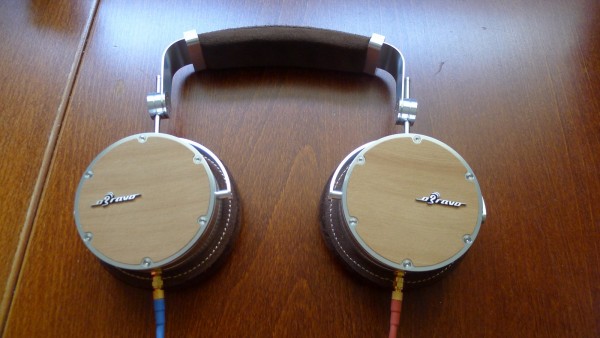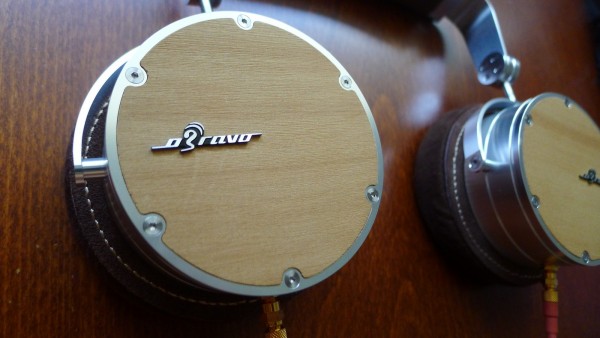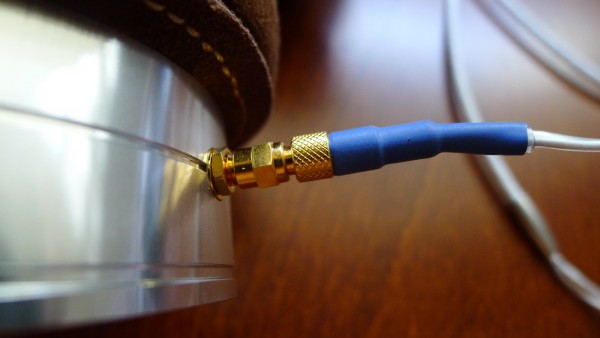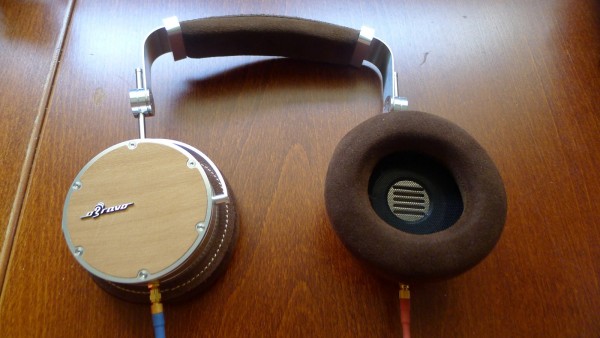
Taking the oBravo HAMT-1 headphones out of the packing, it’s difficult to argue with how “premium” they look. All the polish and sheen of a pair of high-end cans, costing S$2,388, are there.
The metallic frame feels solid, as does the wooden closed back design. As with some expensive headphones today, the HAMT-1 comes with its own briefcase and cloth bag.
The craftsmanship that so many headphone fans love is certainly there. The cables are neatly braided and also detachable so you can tweak with your own balanced cables if you wish.
But the unique selling point here is the headphones’ air-motion transformer technology. The diaphragm here is bonded with aluminium strips and is folded like an accordion and suspended within a magnetic field.
When signal current passes through the aluminium strips, the folded pleats move like, well, an accordion, pushing out air five times faster than a conventional cone driver, explains the Taiwanese company behind the oBravo brand, Stymax International.
Unfortunately, while the technology seems promising, the tuning on the HAMT-1, the first such headphones from Stymax, may not please everyone, certainly on first listen.

For starters, you would not say the sound on the headphones is neutral. Unlike some of the best headphones, such as the Sennheiser HD800, which can sound quite different connected to various amplifiers, the HAMT-1 comes with a distinct flavour, at least in its original, untweaked form.
The main reason seems to be the bass-heavy emphasis. Playing jazz, bossa nova and pop music tracks, I get the feeling the headphones are stuck trying to get somewhere. They sound recessed.
“Not enough detail” was another note I had jotted down while listening. It’s certainly not as revealing, compared to other high-end cans, where you’d expect to hear little things like a singer drawing a quick breath before launching into the chorus.
To be sure, the HAMT-1 is not so bad as to sound murky, but I’d expect a pair of cans at this price to extract a lot more detail than what I heard. I expect it to be a lot more energetic as well.
Yet, on fast tracks, the beat seems to be held back. I also find a lack of sparkle in the treble. For sure, string pieces could sound brighter. I find my reference pair of Beyerdynamic T1s offering more transparency, detail and dynamics.
A double-edged sword is the closed back design on the HAMT-1, which seems to make the sounds rather boxed in.
The openness and air that you’d expect from a big pair of open-back headphones are hard to detect, as a result. On the flip side, the HAMT-1 reduces sound leakage, so you won’t annoy people around you.

Perhaps one area that the HAMT-1 does relatively well in is bass-heavy tracks. There was certainly enough heft here for bass guitars in a Six String Theory album I heard. Once more, however, I’d have liked more definition and precision. Otherwise, your ears get lethargic pretty fast.
To be fair to the HAMT-1, it will have its fans. During my tests, I noticed that it brought some of that warm, cozy feeling on old Stan Getz bossa nova tracks. It helped that the HAMT-1’s ear pads kept most of the external noise out.
Even then, there was no escaping that the vocals seemed a little veiled and lacking in clarity. Perhaps this is what some folks might like as “warmth” but I’m not a student of that school of thought.
One thing to note is that the HAMT-1 might not sound good – at least out of the box – with some amplifiers. I hooked it up to my Schiit Audio Valhalla tube amplifier, which I use with the Beyerdynamic T1s, and the HAMT-1 sounded bloated and “echo-ey” here.
Good news is that the HAMT-1 actually works better with lower-power amplifiers. It is not hard to drive, thanks to its 56-ohm impedance and 105dB sensitivity.

It certainly paired better with a low-power China-made DAC cum amplifier – a TCG TRD3 from Shenzhen – or even a Samsung Galaxy Note 4 smartphone. For a change, the HAMT-1 is a pair of big headphones you can actually drive efficiently without carrying a battery pack on your back.
And the Singapore distributor, AudioSound, has promised that the bass-heavy sound can be tweaked, by using silicon plugs on the bass reflex ports on the headphones. It also will customise things to the liking of customers, as part of its service for the high asking price.
I wish that the HAMT-1 sounded right in its original form, to be honest. Without customisation, it is unlikely to turn the tables on top-end favourites like the Beyerdynamic T1 and Sennheiser HD800, which are actually cheaper despite costing more than S$1,000.
I’d like Stymax to also improve the headphone adapter. The large attachment has a habit of getting stuck in an amplifier when you try pulling out the cable.
One common comment in reviews of the HAMT-1 is that it’s unlike what you’d normally hear from headphones using more conventional designs. Certainly, its efficiency opens up opportunities to have great audio on the go, even when plugged directly into small digital audio players.
For that, though, I believe you’d need to tweak the headphones more. I’d like the manufacturer to tune them a little more, to have a more balanced sound, for starters.






